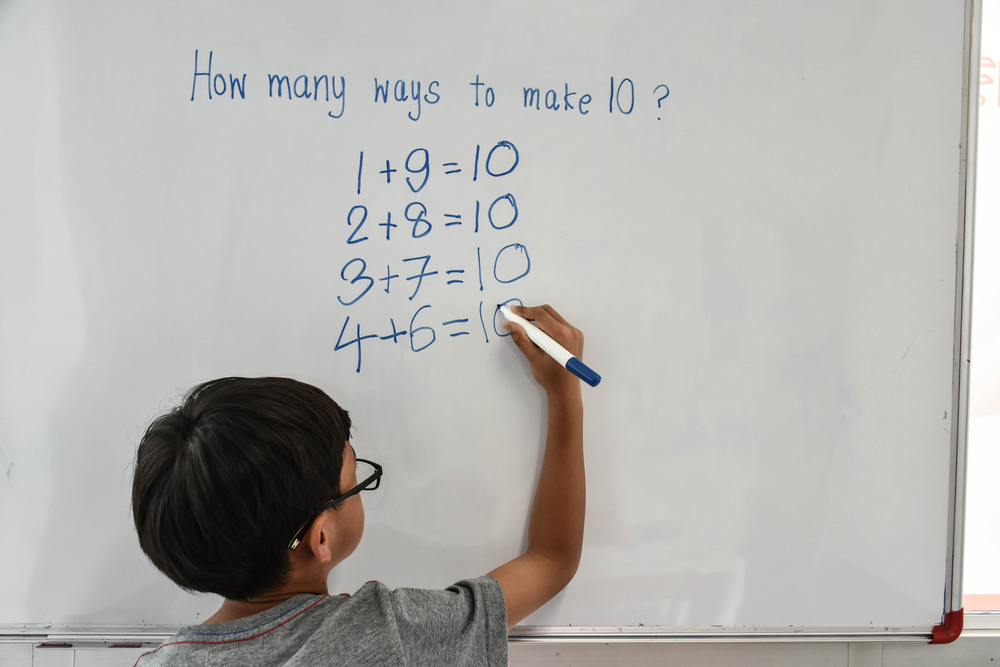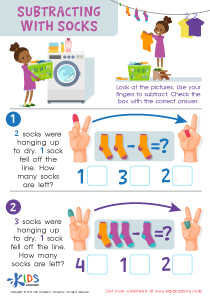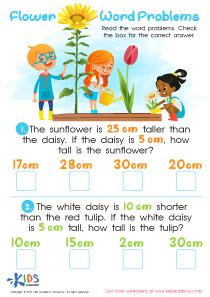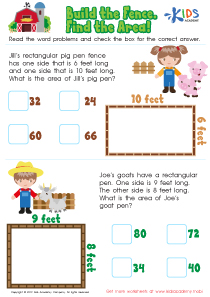Money Word Problems Worksheets for Ages 5-9
3 filtered results
-
From - To
Sharpen your child’s math skills with our engaging Money Word Problems Worksheets for ages 5-9. Each worksheet features realistic money scenarios designed to strengthen problem-solving abilities while making learning fun. Perfect for developing essential skills such as addition, subtraction, and critical thinking, our worksheets help young learners grasp basic financial concepts. Whether in a classroom or at home, these printable worksheets provide an interactive way for children to practice calculating costs, making change, and understanding the value of money. Enhance math confidence and prepare your kids for real-world financial literacy with our expertly crafted activities!
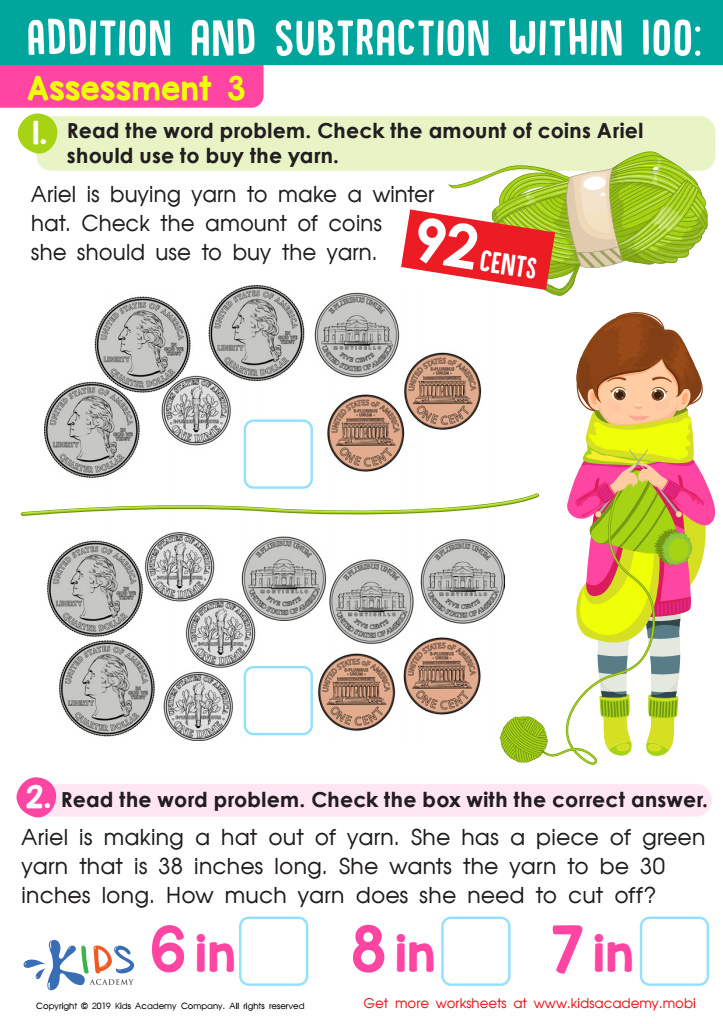

Assessment 3 Math Worksheet
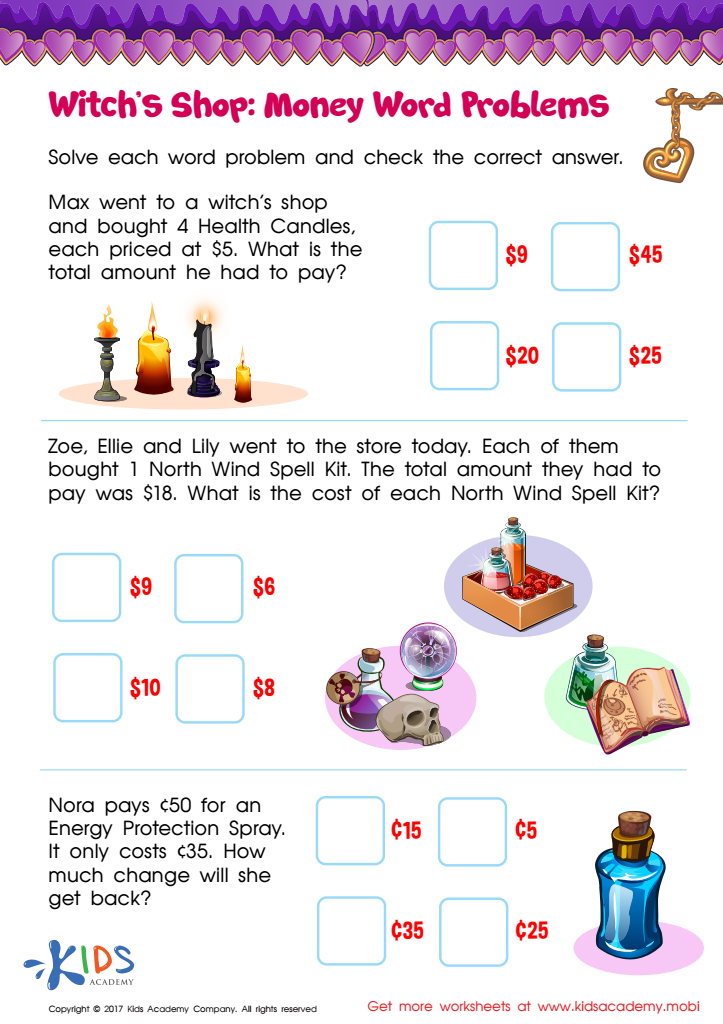

Money Word Problems Printable
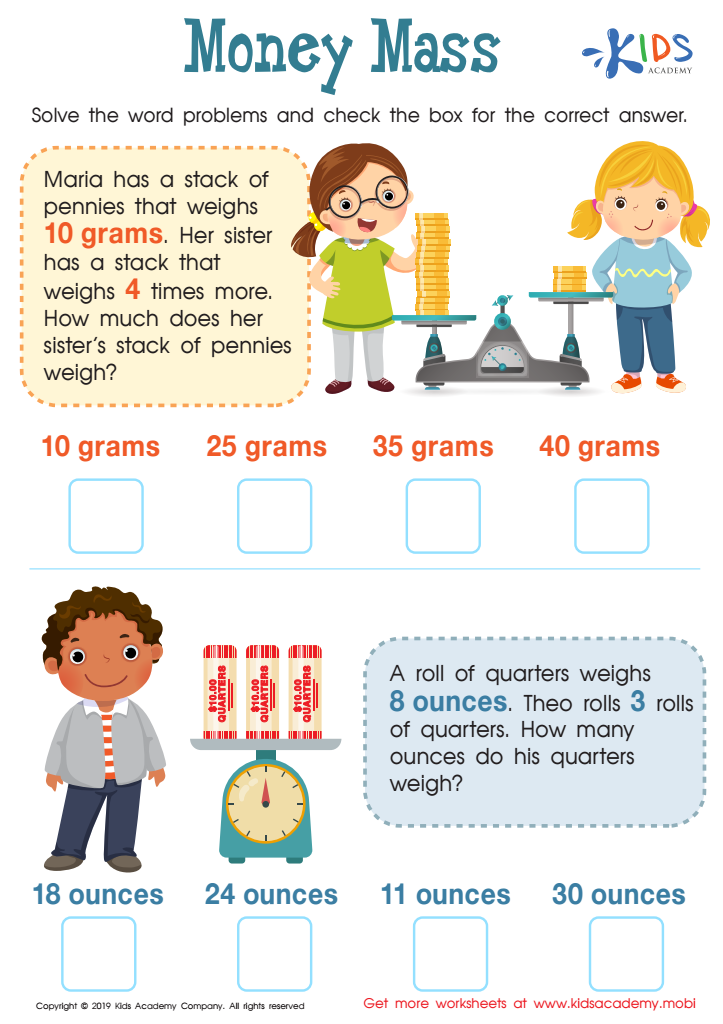

Money Mass Worksheet
Teaching money word problems to children aged 5-9 is crucial for developing their numerical and financial literacy from an early age. First and foremost, these problems introduce basic mathematical operations such as addition, subtraction, and occasionally multiplication and division, through practical, relatable scenarios. These skills form the foundation for more complex mathematical concepts they will encounter later.
Additionally, money word problems teach children how to handle and understand money—a vital life skill. They learn to identify different denominations, make change, and develop budgeting skills, which are essential for their future financial independence and responsibility. Integrating real-world contexts such as shopping or saving for a desired toy make learning relevant and engaging, promoting active participation and retention of concepts.
When parents and teachers focus on these word problems, they also foster critical thinking and problem-solving skills. Kids learn to decipher the information given, identify what a problem is asking for, and determine the necessary steps to reach a solution. This logical progression is not only applicable to math but to everyday decision-making processes as well. Overall, attention to money word problems promotes a practical, hands-on approach to mathematics, preparing children not just academically, but for real-world financial interactions.
 Assign to My Students
Assign to My Students





